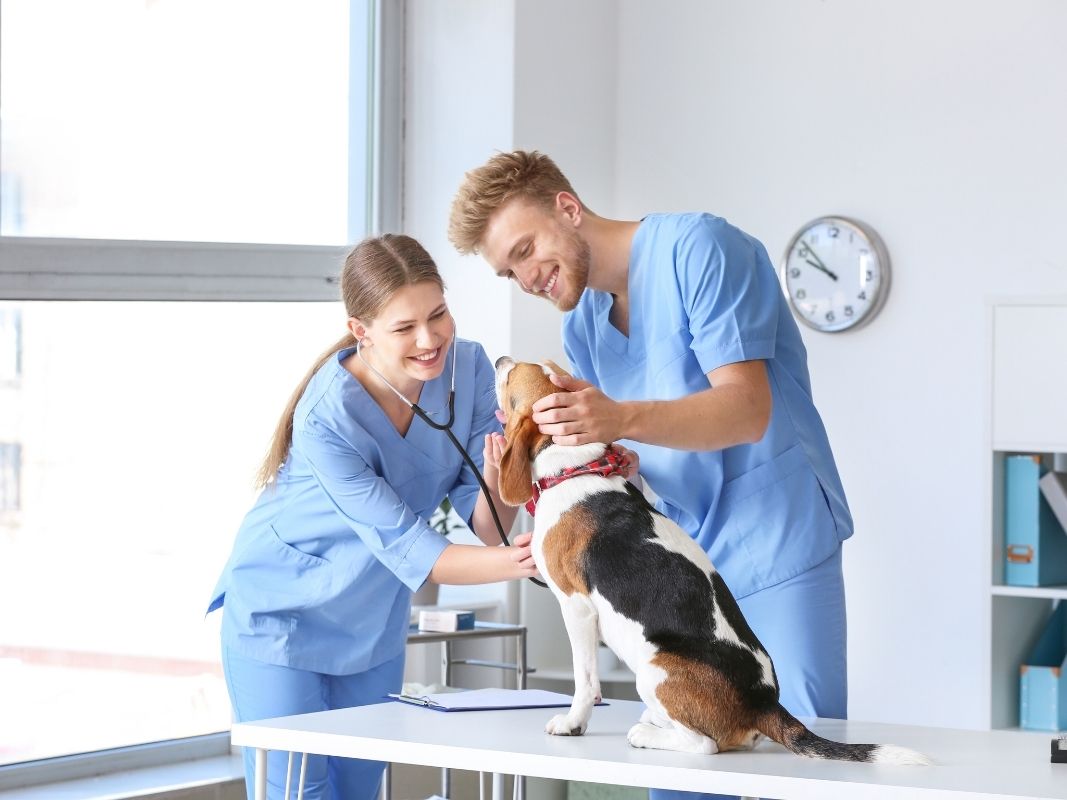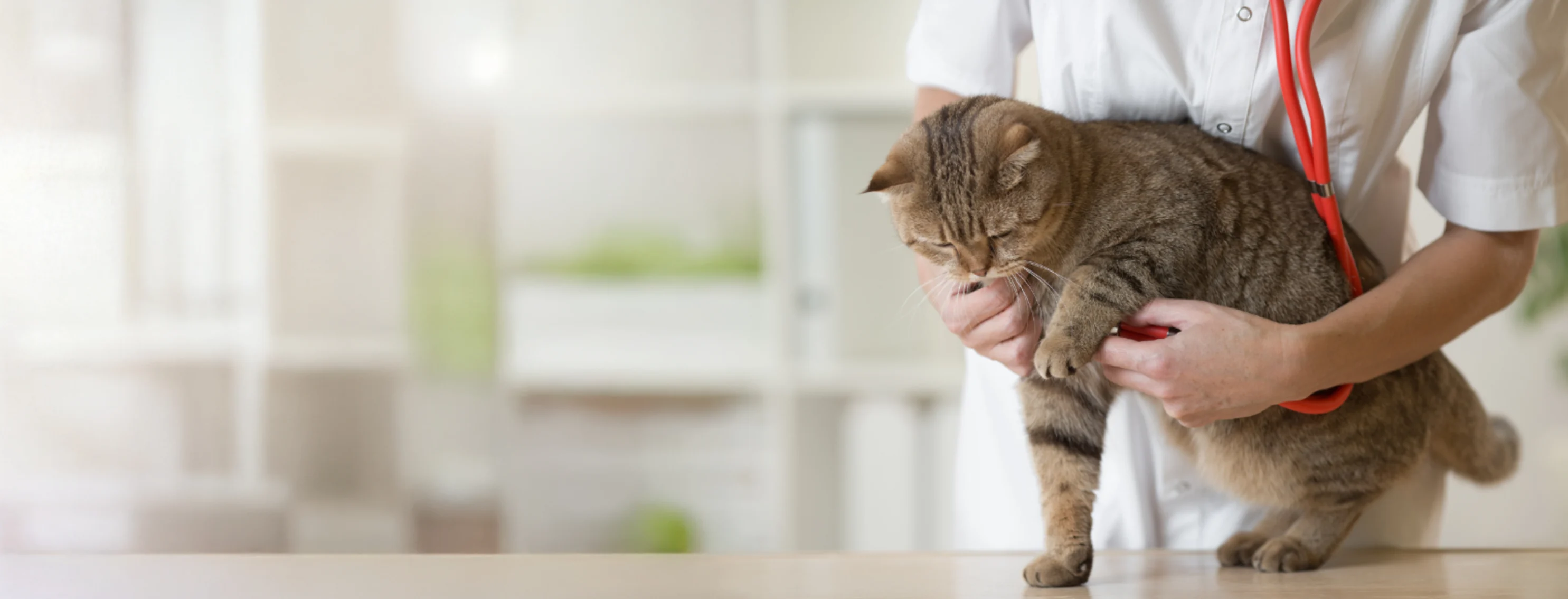Post-Op Recovery Guide After Your Dog’s tplo surgery
Post-Op Recovery Guide After Your Dog’s tplo surgery
Blog Article
Why Animal Rehab Is Important: the Conveniences of Veterinarian Solutions for Your Family pet's Recuperation
Animal rehabilitation is a necessary element of recovery for animals facing injuries or specials needs. Veterinary solutions supply vital assistance through tailored rehabilitation plans that address private requirements. These strategies typically consist of discomfort monitoring, physical treatment, and dietary support. Comprehending the different elements of pet rehab can illuminate its significance in improving recovery results. What certain advantages do these services offer, and how can they transform a pet dog's healing trip?
Understanding Pet Rehabilitation
Animal rehabilitation incorporates a range of healing practices focused on restoring the health and wellness and functionality of hurt or impaired pets. This area integrates different techniques, consisting of physical therapy, hydrotherapy, and job-related treatment, tailored to meet the specific requirements of each pet. Rehabilitation experts analyze a pet's problem, establishing individualized therapy strategies that might include workouts to strengthen muscles, enhance wheelchair, and improve overall health. The procedure not only concentrates on physical recuperation but additionally addresses psychological and behavior facets. Pets typically experience stress and anxiety and anxiety adhering to an injury, making psychological wellness factors to consider important in recovery. By creating a supportive environment, therapists can aid pets restore their self-confidence and adapt to their new scenarios. With normal sessions, pets can experience substantial enhancements, inevitably bring about a better lifestyle. In general, recognizing pet rehab highlights its significance in advertising recovery and improving the bond between pet dogs and their proprietors.
The Function of Discomfort Monitoring in Recovery
How essential is efficient discomfort management in the healing of injured pets? It plays an essential duty in helping with recovery and boosting the overall well-being of family pets. Correct pain monitoring not just minimizes discomfort but likewise advertises flexibility, enabling pets to take part in recovery tasks required for recovery. When pain is successfully handled, pets often tend to react positively to therapy, resulting in quicker rehab outcomes.Veterinarians make use of different methods to evaluate and attend to pain, including medications, acupuncture, and different treatments. By customizing pain monitoring methods to the private needs of each animal, vets can guarantee that animals remain calm and participating throughout their recovery trip. Minimizing discomfort assists reduce tension, which can prevent healing and prolong recuperation times. To summarize, reliable pain administration is vital for enhancing the healing process and boosting the top quality of life for injured animals.
Physical Treatment Techniques for Pet Dogs
Numerous physical treatment techniques are offered to assist in the rehab of animals recuperating from injuries or surgical procedures (emergency vet). These methods can improve mobility, alleviate discomfort, and promote recovery. Therapeutic workouts, for example, aid strengthen muscular tissues and boost joint feature, enabling animals to reclaim their physical capabilities gradually. Hand-operated therapy, that includes massage and mobilization, can reduce stress and improve flow, adding to a quicker recovery.Other strategies such as passive variety of movement exercises motivate joint adaptability and reduce rigidity. In addition, electric excitement treatment might be employed to boost nerves and muscular tissues, promoting recovery and discomfort relief.Veterinary specialists typically customize these techniques per animal's certain requirements, making certain a detailed rehabilitation plan. By implementing these physical therapy techniques, family pets can experience better lifestyle and a much more effective healing from their ailments. The assimilation of these techniques into rehab programs is necessary for optimal healing results
Benefits of Hydrotherapy for Recovery
Hydrotherapy provides significant advantages in animal rehabilitation, particularly in enhancing mobility. This water-based treatment advertises pain relief while providing comfort to hurt or recovering family pets. Furthermore, it promotes strength-building exercises that add to general physical recuperation.
Enhanced Movement Improvement
As animals recuperate from injuries or surgical treatments, improved wheelchair typically becomes a main objective of their rehabilitation. Hydrotherapy works as a beneficial tool in accomplishing this goal. With water-based workouts, animals can engage in low-impact activities that facilitate joint flexibility and reinforce muscular tissues without the stress of weight-bearing tasks. The buoyancy of water supports their bodies, permitting increased series of motion and wheelchair improvement. Furthermore, hydrotherapy encourages much better balance and control, which are vital for bring back normal movement patterns. Routine sessions can lead to substantial progression in an animal's physical abilities, inevitably boosting their high quality of life. This method not only aids in recuperation yet also promotes a more active and meeting way of living post-rehabilitation.
Discomfort Relief and Comfort

Relief from pain is an essential aspect of pet rehab, and hydrotherapy greatly adds to this procedure. By using water's buoyancy, hydrotherapy minimizes joint anxiety and eases discomfort throughout movement. This healing approach gives a soothing atmosphere where animals can take part in gentle workouts without the complete weight of their bodies influencing their recuperation. The cozy water boosts blood flow, advertising recovery while likewise encouraging leisure. Furthermore, hydrotherapy sessions can be customized to fulfill the particular requirements of the animal, guaranteeing ideal comfort. As animals experience reduced discomfort and enhanced comfort degrees, their general determination to get involved in rehabilitation activities frequently enhances, bring about a much more efficient healing trip. As a result, hydrotherapy acts as a critical tool in improving discomfort alleviation and comfort during rehabilitation.
Strength Structure Workouts
Strength-building exercises play an important function in the recovery process, browse around this site with hydrotherapy offering unique benefits. This type of treatment makes use of water resistance to enhance muscle stamina without putting too much pressure on the joints. The buoyancy of water sustains the pet dog's weight, permitting for more secure motion and raised range of activity. Additionally, hydrotherapy can enhance cardio health and wellness and advertise general fitness, assisting in quicker recovery from injuries or surgical procedures. The controlled setting likewise reduces the threat of reinjury, making it a perfect option for animals calling for recovery. Routine hydrotherapy sessions can bring about noticeable enhancements in wheelchair, toughness, and endurance, eventually boosting the animal's lifestyle and capacity to return to typical activities.
Significance of Custom-made Rehabilitation Plans
Customized rehabilitation plans are crucial for dealing with the unique needs of each pet, ensuring customized therapy approaches. These plans allow for effective progression tracking and needed changes, promoting optimal recuperation results. Additionally, an all natural strategy can improve the general well-being of the pet, advertising a more extensive rehabilitation experience.
Individualized Therapy Approaches
While numerous recovery programs take on a one-size-fits-all approach, the distinct needs of each animal demand personalized therapy plans for optimal healing. Personalized rehab strategies consider various variables, consisting of the animal's types, age, medical history, and certain injuries or problems. By tailoring treatments, veterinarians can attend to each family pet's special obstacles, making best use of the effectiveness of the rehabilitation procedure. Embellished strategies might incorporate various modalities such as physical therapy, hydrotherapy, and healing exercises, ensuring that the therapy straightens with the animal's capacities and progression. In addition, personalized techniques foster a stronger bond in between the animal and the caregiver, promoting a much more appealing and encouraging recovery atmosphere. Inevitably, personalized therapy is crucial for attaining finest possible end results in animal rehabilitation.
Progress Monitoring and Adjustments

Holistic Recovery Strategies
All natural healing techniques are vital for efficient pet rehabilitation, as they emphasize the importance of customized treatment strategies tailored per animal's details needs. This strategy considers the physical, psychological, and environmental aspects affecting recovery. Customized rehabilitation plans may include a mix of physical treatment, dietary therapy, and behavior modifications. By dealing with these varied aspects, veterinarians can improve the general well-being of the pet and advertise a much faster healing. Additionally, such customized techniques facilitate a deeper understanding of the pet's one-of-a-kind challenges, leading to extra reliable treatments. Eventually, alternative recuperation strategies not just enhance physical health yet additionally add to the pet's psychological and psychological security, making sure a complete recovery experience.
The Impact of Nutrition on Recuperation
Nourishment plays an important function in the recovery procedure for rehabilitating pets, frequently identifying the rate and effectiveness of healing. A healthy diet supplies the essential nutrients that sustain cells repair, increase the body immune system, and enhance overall vitality. Protein is particularly essential, as it assists in muscular tissue restoring and recuperation from injuries. Vital fats, vitamins, and minerals also add to minimizing inflammation and advertising ideal mobile function.Veterinarians often highlight the significance of tailored nutrition plans, taking into consideration each animal's details requirements, age, and wellness standing. Correct hydration is equally essential, as fluids promote vitamins and mineral absorption and aid in detoxification. By making sure that family pets obtain appropriate nourishment, caretakers can substantially boost their chances of a successful healing, causing better long-term health and wellness outcomes. Inevitably, nutrition functions as a fundamental component in the rehabilitation trip, supporting animals in gaining back toughness and resilience post-injury closest veterinarian or health problem.
Success Stories: Animals That Grew After Rehabilitation
Successful rehabilitation stories abound, showcasing the resilience of pets who have gotten over substantial challenges. Take, for instance, Bella, a golden retriever that suffered extreme injuries from an automobile mishap. With committed veterinary care and a thorough recovery program, she reclaimed her wheelchair and returned to her playful self, much to her proprietor's joy. Max, a senior cat identified with arthritis, experienced exceptional improvement with a mix of physical therapy and pain monitoring. His newly found dexterity enabled him to appreciate his preferred sunbathing places once more. Another inspiring instance is that of Coco, a saved greyhound that got over anxiety with therapy and socialization strategies, allowing her to grow in her new home. These success stories exhibit the transformative power of pet rehabilitation, highlighting that with the best support, animals can not just recover but lead meeting lives, improving the bonds they show to their households.
Regularly Asked Questions
For how long Does the Recovery Refine Generally Take for Pets?
The rehabilitation procedure for animals normally differs based upon the injury or condition, ranging from a couple of weeks to numerous months. Private progression, treatment kind, and dedication to workouts substantially affect the total period of recuperation.
Are There Any Kind Of Threats Connected With Animal Recovery?
Animal rehabilitation may bring risks such as exacerbation of injuries, incorrect strategies causing discomfort, or not enough tracking throughout recovery. These aspects can hinder progress and impact the general efficiency of the rehabilitation process.

Can All Pets Gain From Rehab Solutions?
Not all family pets may require rehabilitation, yet several can profit substantially. Rehabilitation solutions can boost flexibility, minimize pain, and enhance overall well-being, especially for those recovering from injuries, surgeries, or persistent conditions.
Exactly How Can I Prepare My Family Pet for Recovery Procedure?

What Signs Suggest My Pet Needs Recovery?
Indications suggesting a pet dog might need rehab consist of difficulty walking, hopping, decreased task levels, hesitation to leap, or signs of discomfort. Observing these actions can trigger proprietors to look for specialist analysis and therapy for their pet dogs.
Report this page